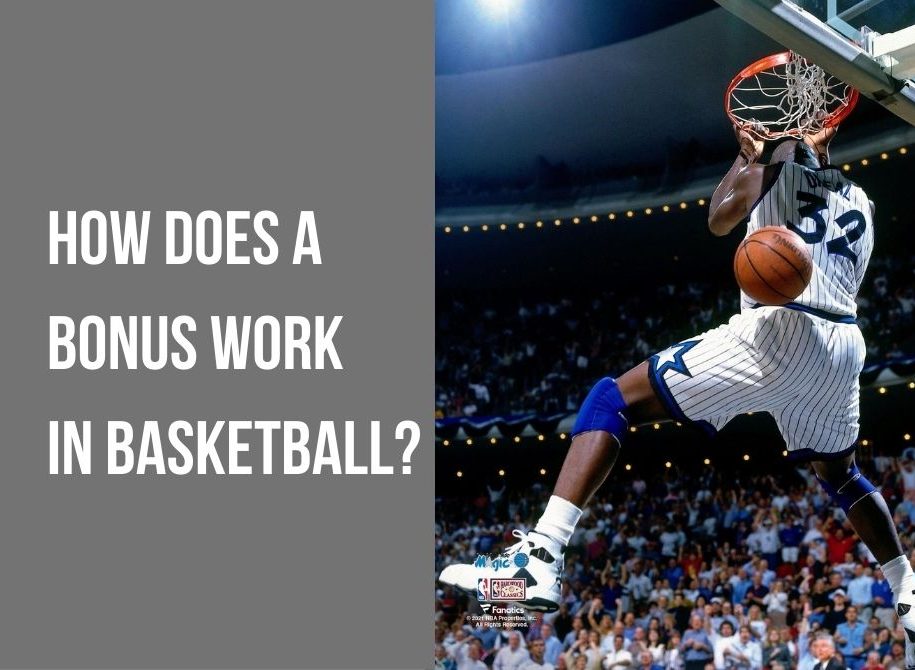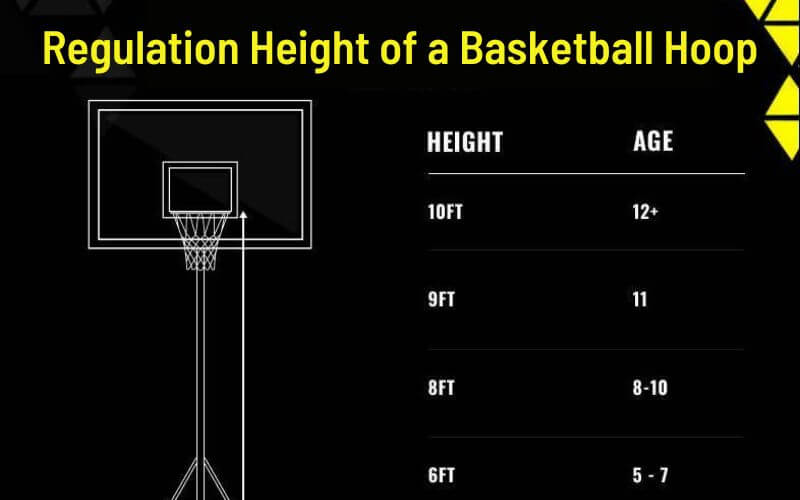Basketball is a fast-paced and exciting game that requires skill, strategy, and a good understanding of the rules. One important rule that can greatly impact the outcome of a game is the bonus work in basketball.
This rule comes into play when a team has committed a certain number of fouls, giving the opposing team an opportunity to score free throws without having to make a field goal.
The bonus rule is an essential part of the game, and understanding how it works can help coaches and players strategize and make informed decisions during a game.
In this article, we’ll explore the ins and outs of the basketball bonus, including how it works, when it applies, and how it can be used to your advantage.
Also Read: Best Mini Portable Basketball Hoop Review
What Does the Bonus Mean Work Basketball Game?
After an opponent has committed their maximum number of fouls in a quarter or half, a team gets free throws at the free-throw line.
What is a Double Bonus?
A double bonus work basketball operates in the same manner as a normal bonus in that it entitles a team to be given free throws if an opposing team commits a further foul after that team has already reached its fouls maximum for the quarter or the half.
The player who shoots the free throw is awarded a second free throw attempt regardless of whether or not they made the initial attempt at the free throw. This is a significant difference from the standard bonus.
It doesn’t take effect until the 10th infraction and any consecutive ones after that. This is mostly used in college basketball games that are sanctioned by the NCAA.
What are Poss and Bonus?
A double bonus operates in the same manner that a normal bonus does, in that it entitles a team to be given free throws in the event that an opposing team commits more fouls after that team has already reached its fouls maximum for the quarter or the half.
The player who shoots the free throw, as opposed to the person who makes the initial free throw attempt, is awarded a second chance at shooting the free throw regardless of whether or not they made the first attempt. This is a significant difference from the standard bonus.
It doesn’t take effect until the tenth infraction and any further ones after that. This rule is mostly implemented in college basketball games that are sanctioned by the NCAA.
What Does Being in the Bonus Mean?
A team is said to be in the bonus when they get an automatic opportunity at free throws whenever one of its players is fouled in the game of basketball.
In order for this to take place, it is necessary for the opposing side to have accumulated a higher number of fouls than the maximum allowed for a particular quarter. Although this restriction changes somewhat from one professional basketball league to the next, the underlying principle stays the same.
After each quarter or half, depending on the requirements of the basketball league, there is a resetting of this bonus.
What is the Bonus in Timeouts in Basketball?
Timeouts are pauses in the action that either side may request in order to enhance their performance in the game. This can be done by giving players a chance to relax, by making substitutes, or by planning out plans.
A bonus in timeouts is the same as a regular bonus in that it consists of free-to-throw attempts at the free-throw line given to a team after the opposing team has reached its maximum number of fouls in a quarter or half. This occurs when the opposing team has reached its maximum number of fouls in a quarter or half.
How Does Bonus Work In Pro Basketball?
During a game of basketball, players from both teams may sometimes foul each other out of competition. Each team’s total fouls are tallied and recorded as they are accumulated during the game.
According to the regulations of the league, further fouls committed by a team that has already reached the maximum number of fouls allowed for that period result in the opponent team being awarded free throws as a penalty.
The player who was fouled is the one that shoots their free shots. The regulations of each league establish a different maximum number of fouls that may be committed in either the first or second half of the game.
Technical fouls, which are fouls that are not a result of contact with another team’s player, and offensive fouls, which are fouls committed by a player who is in possession of the ball, are typically not counted towards each team’s foul limits. Defensive fouls, on the other hand, are counted toward each team’s foul limits.
The foul limit is reset at the end of each half or quarter, and free throws are not granted for fouls committed after that point until either team has reached its maximum number of fouls.
Why Bonus?
In a sport of this kind, it is impossible to avoid committing fouls. Bonus is essential to the integrity of the game’s fairness since it serves as an efficient means of reducing the number of fouls committed. It is to the advantage of the sport since it decreases the allure of committing fouls for players.
Imagine that there is less than a minute left in a nail-biting basketball game that you are playing. Even if your side is now down in the score and the difference between the two teams is just a few points, there is still a chance that they will win. In this time and place, issues of fairness and equal opportunity are of the utmost significance.
During these vital moments, the coach of the other team could decide to urge one of his players to commit a foul on one of your side’s players in order to throw your team off-balance. Imagine, too, that there is no consequence for committing these infractions.
This creates difficulties for your team’s attempt to win the match since it prevents you from having a fair opportunity to end the game in a powerful manner.
Teams are compelled to play honestly and refrain from committing fouls in order to win games when a bonus is in place as a punishment for fouls.
The whole concept is predicated on the observation that players would not commit a foul if doing so will result in the opponent being granted a certain number of free throws. They would commit a foul, on the other hand, if there was no penalty, which is precisely why there is a bonus.
How do you Get Bonuses in Basketball?
When an opponent commits fouls after surpassing the foul restrictions for a quarter or half, a bonus is paid to the team that is being played against.
How Many Fouls in Basketball to Get to Bonus High?
In basketball, the league or level of play determines the maximum number of fouls that may be committed in either a quarter or a half.
In both the NBA and the WNBA, the maximum number of fouls that may be committed in a single quarter is four. The fifth foul and any following fouls committed during this same quarter result in the opponent being awarded two free throws as a penalty.
According to FIBA rules, the maximum number of fouls that may be committed in a quarter is four; any further fouls committed in the same quarter result in the opposing team being awarded free throws as a penalty.
However, the NCAA sets a cap of six fouls each half as the maximum number allowed. After the seventh foul in the same half, players get a penalty for each successive foul.
How to be Strategic When in the Bonus?
If your opponent commits more fouls than allowed in a quarter or a half, and you find yourself in the bonus position as a result, you may make the most of this bonus circumstance by approaching it in a planned manner.
For instance, the team may convert to an offensive mode and use a variety of strategic plays to compel the opposition side into committing fouls, which will immediately result in free throws for your team and perhaps free points as a consequence of the fouls committed.
The team could also want to try passing the ball to players who are proficient at free throws so that they have a greater chance of getting fouled when they shoot the ball. This will make it such that they take the free throws, which will increase the team’s chances of scoring points from the free throws.
On the other hand, the gameplay of the side that has already committed enough fouls for their opponent to be in bonus might be impacted by this circumstance. Therefore, it is essential that they take a strategic approach to the situation.
They have the ability to strategically commit fouls against opponents who are poor at shooting free throws. This not only gives them an edge in the event of free throws but also helps them get back into the game by slowing down the clock and giving them more time to score.
When the other team is in bonus, the other side has an opportunity to gain an advantage by committing fouls against poor free shooters. This helps burn out time and disrupts the momentum of the team that is now in bonus.
NBA Rules On Bonus:
We will examine the different rules on bonuses in different basketball leagues since they differ from league to league.
How long does a Bonus Last in NBA?
As was just said, the bonus scenario in the NBA takes place when a team accumulates more than four fouls in a single quarter. This benefit is valid for one quarter, after which it is reset and made available for another three months.
However, it is essential to keep in mind that the bonus rule changes during the last two minutes of each quarter of an NBA game. The regulation states that regardless of the bonus limit, a team is not allowed to commit more than two fouls during the final two minutes of each quarter.
If a team commits two or more fouls in the last two minutes of a quarter, free throws will be given to the team that is playing against them.
How to Get a Bonus in Basketball?
The likelihood of you and your team receiving a bonus depends, as was said previously, on the frequency with which your rival commits fouls.
The National Basketball Association has a foul restriction of four each quarter, and your opponent has to reach that limit before you may get a bonus for any subsequent foul they commit in the same quarter.
In addition, you are eligible for an additional reward if your rival commits two or more fouls in the last two minutes of each quarter.
How about the NCAA College Basketball League?
The NCAA college bonus work basketball rules are quite different from those of the NBA and WNBA with regard to a bonus situation.
Frequently Asked Questions:
A bonus is a term used in basketball to describe a situation where a team has committed a certain number of fouls within a specific period. Once a team reaches the limit, the opposing team is awarded free throws for every foul committed by the other team.
In most basketball leagues, a team enters the bonus after committing a total of 7 fouls within a half. However, in the NBA, teams enter the bonus after committing 5 fouls in each quarter.
Once a team reaches the bonus, the opposing team is awarded two free throws for every foul committed by the other team
No, only personal fouls count toward the bonus. Technical fouls, offensive fouls, and other types of fouls do not count toward the bonus.
Conclusion:
In basketball, the bonus work in basketball is an important rule that can greatly impact the outcome of a game. Once a team has committed a certain number of fouls, the opposing team is awarded free throws, giving them an opportunity to score without having to make a field goal.
The number of free throws awarded during the bonus is two, and the rule applies to personal fouls only. Coaches and players can use the bonus to their advantage by intentionally fouling the other team to stop the clock or force them to make free throws under pressure.
Understanding the bonus is important for any basketball player, coach, or fan as it can play a significant role in determining the winner of a game.








